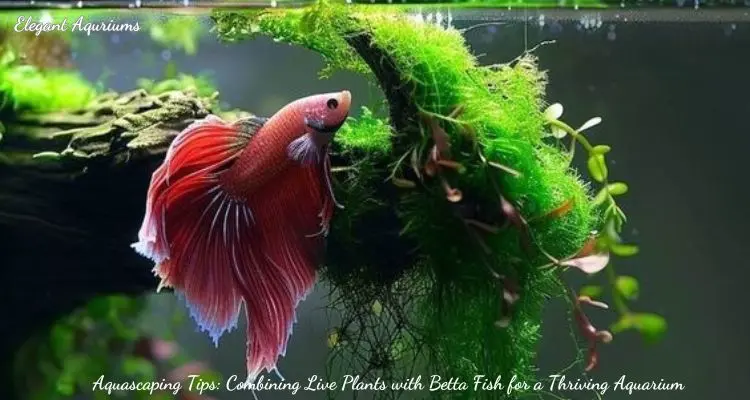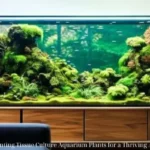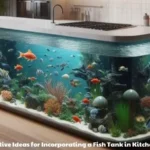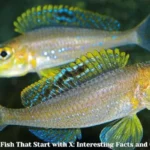Aquarium accessories and decorations
Aquascaping Tips: Combining Live Plants with Betta Fish for a Thriving Aquarium
Live plants with Betta fish create a stunning and thriving ecosystem within an aquascaped tank, blending the art and science of aquarium design. When properly executed, this combination not only enhances the visual appeal of the aquarium but also promotes the health and well-being of its inhabitants. Betta fish, with their vibrant colors, flowing fins, and engaging personalities, are a popular choice for these setups. Elegant Aquriums will delve into the best practices for aquascaping with live plants and Betta fish, covering plant selection, tank setup, maintenance, and care to ensure a harmonious and flourishing environment.
The Benefits of Combining Live Plants with Betta Fish
Creating a Natural Habitat
Betta fish, native to the shallow waters of Southeast Asia, thrive in environments rich in vegetation. By incorporating live plants into their tank, you replicate their natural habitat, providing them with places to explore, hide, and rest. Live plants also create a sense of security for Betta fish, reducing stress and promoting more natural behaviors.
Enhancing Water Quality
Live plants play a crucial role in maintaining water quality. They absorb excess nutrients such as nitrates and phosphates, which can otherwise lead to algae growth and poor water conditions. Plants also produce oxygen during the day, contributing to a healthier environment for your Betta fish.
Promoting Betta Health and Well-being
Live plants contribute to the overall well-being of Betta fish by offering shelter, reducing aggression, and providing opportunities for exercise. The presence of plants can also encourage natural behaviors such as bubble nest building, which is a sign of a happy and healthy Betta.
Choosing the Right Live Plants for a Betta Tank
Understanding Betta Fish Behavior and Preferences
Before selecting plants, it’s essential to understand the behavior and preferences of Betta fish. Bettas are known for their territorial nature and often enjoy exploring their surroundings. They prefer calm waters with plenty of hiding spots and resting areas near the surface. Keeping these preferences in mind will help you choose the right plants that cater to your Betta’s needs.
Top Live Plants for Betta Tanks
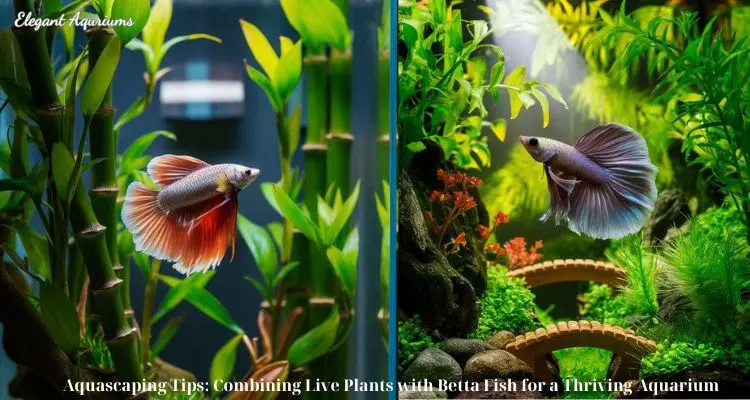
- Java Fern (Microsorum pteropus): Java Fern is a popular choice for Betta tanks due to its low maintenance requirements and broad leaves, which provide excellent hiding spots. It grows well in low to medium light and can be attached to driftwood or rocks.
- Anubias (Anubias barteri): Anubias is another hardy plant that thrives in a Betta tank. Its thick leaves offer shelter, and it can be easily attached to decor. Anubias grows slowly and prefers low to medium light, making it ideal for Betta tanks.
- Amazon Sword (Echinodorus amazonicus): Amazon Sword plants are larger and can serve as a striking centerpiece in a Betta tank. They require moderate lighting and nutrient-rich substrate but offer ample cover for Betta fish.
- Java Moss (Taxiphyllum barbieri): Java Moss is a versatile plant that can be used to create carpets, cover driftwood, or float freely. It’s easy to maintain, grows in low light, and provides Betta fish with hiding spots and soft resting areas.
- Duckweed (Lemna minor): Duckweed is a floating plant that provides shade and reduces light penetration, which Bettas often appreciate. It’s fast-growing and can help control nitrate levels, but it may require regular trimming to prevent overgrowth.
- Cryptocoryne (Cryptocoryne wendtii): Cryptocoryne plants are well-suited for Betta tanks, with their low-growing nature and varied leaf colors. They thrive in low to moderate light and create a lush, natural environment.
- Hornwort (Ceratophyllum demersum): Hornwort is a fast-growing plant that can be used as a floating plant or anchored in the substrate. It’s excellent for absorbing excess nutrients and provides hiding spots for Betta fish.
Setting Up the Tank: Aquascaping with Live Plants and Betta Fish
Selecting the Right Tank Size
While Betta fish can survive in small tanks, they thrive in larger environments. A minimum of 5 gallons is recommended, but a 10-gallon tank or larger is ideal for aquascaping with live plants. A larger tank offers more space for plants, better water stability, and ample room for your Betta to swim and explore.
Substrate Selection
The substrate is the foundation of your aquascape and plays a crucial role in plant growth. For live plants, choose a nutrient-rich substrate such as aquarium soil or a gravel and soil mix. Some plants, like Amazon Sword, require a deeper substrate to anchor their roots, while others, like Java Fern and Anubias, can be attached to decor without needing substrate.
Lighting Considerations
Proper lighting is essential for the growth and health of live plants. Most Betta tanks benefit from low to moderate lighting. LED lights are a popular choice as they are energy-efficient and can be adjusted to provide the right intensity for your plants. Avoid overly bright lighting, as Betta fish prefer dimmer environments and excessive light can lead to algae growth.
Aquascaping Design Principles
When designing your Betta tank, consider the following principles:
- Create Layers: Use a combination of foreground, midground, and background plants to create depth and visual interest. Foreground plants like Java Moss and Cryptocoryne can cover the substrate, while taller plants like Amazon Sword can be placed at the back.
- Provide Shelter: Arrange plants to create hiding spots and resting areas for your Betta. Bettas enjoy having dense plant cover where they can retreat and feel secure.
- Leave Open Swimming Spaces: While plants are important, ensure there are open areas for your Betta to swim freely. Bettas are active swimmers, and they need space to move around comfortably.
- Incorporate Hardscape Elements: Driftwood, rocks, and other hardscape elements can complement your plants and provide additional hiding spots. Ensure that any decor you use is smooth and free of sharp edges to prevent injury to your Betta’s delicate fins.
Caring for Live Plants in a Betta Tank
Water Parameters
Maintaining stable water parameters is crucial for the health of both your Betta fish and live plants. Bettas prefer slightly acidic to neutral water with a pH range of 6.5 to 7.5. The water temperature should be kept between 76°F and 82°F (24°C to 28°C). Regular water changes (20-30% weekly) help keep water conditions stable and prevent the buildup of harmful substances.
Fertilization
Live plants may require additional nutrients to thrive, especially in a Betta tank where the bioload is low. Liquid fertilizers can provide essential nutrients like nitrogen, phosphorus, and potassium. Root tabs are beneficial for heavy root-feeding plants like Amazon Sword. Always follow the manufacturer’s dosing instructions to avoid over-fertilization, which can lead to algae growth.
CO2 Supplementation
While many low-light plants do not require CO2 supplementation, adding CO2 can enhance plant growth and overall health. If you decide to use a CO2 system, monitor levels carefully, as excessive CO2 can lower the pH and harm your Betta fish. A drop checker can help you maintain optimal CO2 levels in the tank.
Pruning and Maintenance
Regular pruning is essential to keep your plants healthy and prevent them from overtaking the tank. Trim dead or decaying leaves to prevent them from polluting the water. For fast-growing plants like Hornwort, regular trimming may be necessary to keep them under control. Floating plants like Duckweed may require thinning out to ensure they do not block too much light from reaching other plants.
Algae Control
Algae can be a common issue in planted Betta tanks, especially if lighting and nutrient levels are not balanced. To control algae:
- Adjust Lighting: Ensure that the lighting duration is appropriate (8-10 hours per day) and not too intense.
- Reduce Nutrient Imbalance: Avoid overfeeding your Betta and over-fertilizing the plants, as excess nutrients can fuel algae growth.
- Introduce Algae-Eaters: Consider adding snails, shrimp, or algae-eating fish that are compatible with Betta fish to help control algae naturally. Be cautious, as some algae-eaters may not be suitable for a Betta tank.
Betta Fish and Plant Compatibility: Ensuring a Peaceful Environment
Understanding Betta Temperament
Betta fish are known for their territorial and sometimes aggressive behavior, particularly towards other fish with flowing fins. However, they generally coexist peacefully with live plants. The key is to provide an environment that meets their needs for territory, shelter, and stimulation.
Introducing Betta Fish to a Planted Tank
When introducing a Betta to a newly planted tank, it’s important to allow the tank to establish itself first. Here’s how:
- Cycle the Tank: Before adding your Betta, ensure that the tank is fully cycled to establish beneficial bacteria that break down ammonia and nitrites. This process can take 4-6 weeks.
- Plant the Tank First: Plant the aquarium and allow the plants to root and start growing before adding the Betta. This helps prevent the Betta from disturbing newly planted areas.
- Monitor Behavior: After introducing the Betta, monitor its behavior to ensure it is not overly stressed or aggressive. Some Bettas may take a few days to adjust to their new environment.
Feeding and Plant Care
Betta fish are primarily carnivorous and thrive on a diet of high-quality Betta pellets, frozen or live foods like brine shrimp and bloodworms. While Betta fish don’t directly eat plants, their feeding habits can influence plant health in several ways:
- Avoid Overfeeding: Excess food that is not consumed by the Betta can decay and contribute to poor water quality, which can harm both the fish and the plants. Feed your Betta small amounts that they can consume within a few minutes and remove any uneaten food promptly.
- Fish Waste as Fertilizer: The waste produced by Betta fish can act as a natural fertilizer for the plants, providing essential nutrients like nitrogen. However, regular water changes are necessary to prevent nutrient buildup that can lead to algae growth.
- Supplementing Plant Nutrition: While Betta fish waste provides some nutrients, live plants may require additional supplementation, especially in a low-tech setup without CO2 injection. Consider adding a liquid fertilizer or root tabs to ensure your plants receive a balanced diet of essential nutrients.
Troubleshooting Common Issues in Betta-Planted Tanks
Algae Overgrowth
Algae can be a common problem in planted Betta tanks, often caused by an imbalance in lighting, nutrients, or CO2 levels. To prevent and manage algae growth:
- Reduce Light Exposure: Ensure your tank is not receiving too much light, both from the aquarium lights and natural sunlight. Aim for 8-10 hours of light per day and consider using a timer to maintain consistency.
- Balance Nutrients: Over-fertilizing or under-fertilizing can contribute to algae problems. Monitor your tank’s nutrient levels and adjust your fertilization routine accordingly.
- Introduce Algae-Eating Companions: If your Betta tolerates them, consider adding compatible algae-eating species, such as Nerite snails or Amano shrimp, to help control algae naturally.
Plant Decay and Melting
Plant melting, where the leaves of newly introduced plants begin to decay, is a common issue in planted tanks. This can happen due to stress from transplanting, changes in water parameters, or insufficient lighting. To address plant melting:
- Acclimate New Plants Slowly: When introducing new plants, give them time to acclimate to your tank’s water parameters. Some plants may experience initial melting but can recover if given proper care.
- Improve Lighting and Nutrients: Ensure your plants are receiving adequate light and nutrients. If your plants continue to struggle, consider upgrading your lighting system or adding CO2 to boost growth.
- Prune Affected Areas: Remove any decaying or melting leaves to prevent them from fouling the water. This can also encourage new growth.
Betta Fish Nipping at Plants
While Betta fish typically don’t eat plants, some may nibble on plant leaves out of curiosity or boredom. If your Betta is damaging the plants:
- Add More Hiding Spots: Increase the number of plants and hiding spots in the tank to provide your Betta with more areas to explore and reduce boredom.
- Check for Stressors: Ensure that the tank conditions, such as water quality, temperature, and lighting, are optimal. Stress can sometimes lead to unusual behavior in Betta fish.
- Distract with Toys or Companions: Consider adding floating Betta toys or compatible tank mates to keep your Betta engaged and distracted from the plants.
Conclusion
Creating an aquascaped tank with live plants and Betta fish is a fulfilling experience that enhances both the beauty and health of your aquarium. The greenery not only elevates the tank’s aesthetics but also provides a natural habitat that improves water quality and supports your Betta’s well-being.
By selecting the right plants and maintaining a balanced environment, you can cultivate a vibrant aquascape where your Betta thrives. Whether you’re an experienced aquascaper or a novice, the sight of your Betta gliding among healthy, lush plants is a rewarding reflection of your efforts.

